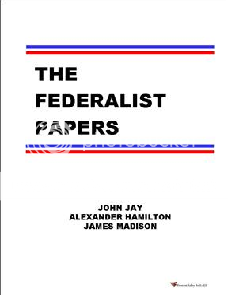A_Note_On_The_Budget_Impasse_2 <== PDF version
We’ve all heard the news about the “budget deal”. Congress passed, and the President signed, the “Budget Control Act of 2011”, which averts the immediate prospect of a “default on the federal government’s financial obligations” by raising the “debt ceiling” about “$2.4 trillion” while “cutting spending” by a guaranteed $0.9 trillion over ten years, plus an additional $1.2 trillion in “additional cuts” which are to be specified by a “Select Committee” required to report its recommendations by 23 Nov 2011; if this Committee cannot agree, or Congress does not pass a list of “spending cuts”, then the $1.2 trillion in “spending cuts” will go into effect “across-the-board”, “divided evenly” between “security” and “non-security”.
Before we celebrate too much, let’s keep in mind that the federal government was already planning on spending levels that would increase the national debt from about $14.3 trillion to about $24 trillion over the next ten years. Secondly, “discretionary” refers to all the things the Congress has allowed itself year-to-year control over, which happen to be all the things authorized by the U. S. Constitution. Third, “non-security” is a code word for “entitlements”, often called “mandatory” spending because the payments are automatic, even though no such power to enact them is mentioned in the U. S. Constitution. So, “discretionary” spending refers to all the things that the government is constitutionally authorized to do, “mandatory” spending is all the things the government is not constitutionally authorized to do. If that seems strange to you, rest assured that it makes perfect sense to the people in Washington. Fourth, “default” means that the government would not have the cash flow to meet all the promises it has made, and would therefore have resulted in politicians actually having to make all those “tough choices” they always brag about. Fifth, Congress has traditionally changed the rules on these types of deals after the fact; usually the overall spending goes up no matter what. Sixth, for those unfamiliar with it, a debt ceiling is the total amount of debt the government allows itself to obligate the taxpayers in the long run.
With these useful definitions in mind, let me restate my opening paragraph again, but this time the phrases in quotes will be in accordance with their true meaning:
We’ve all heard the news about the “smoke-and-mirrors swindle”. Congress passed, and the President signed, the “Business as Usual Act of 2011”, which averts the immediate prospect of a “politician having to do his job” by raising the “actual total debt” to about $21.9 trillion while “pretending to cut spending through promises to reduce the rate of increase” by a guaranteed $0.9 trillion over ten years, plus an additional $1.2 trillion in “accounting gimmicks” which are to be specified by a “bipartisan group of entrenched party hacks” required to report its recommendations by 23 Nov 2011; if this Committee cannot agree, or Congress does not pass a list of “less-than-desired-increased-spending-levels”, then the $1.2 trillion in “less-than-desired-increased-spending-levels” will go into effect “targeted at enemies”, “according to which faction has the political advantage” between “constitutionally necessary tasks, which they don’t care about” and “entitlements, which they are afraid to discuss”.
As I speculated in my first essay on this subject (11 Jul 2011), this bill is full of the usual deceptions, delays, and artifices. There will come a day, however, when real choices have to be made. The longer it is put off, the more painful it will be. As the people in Washington seem to be comfortable with these do-nothing illusions, they will no doubt continue to do so for as long as they can borrow another dime, after which there will be a Very Unpleasant Reckoning.



